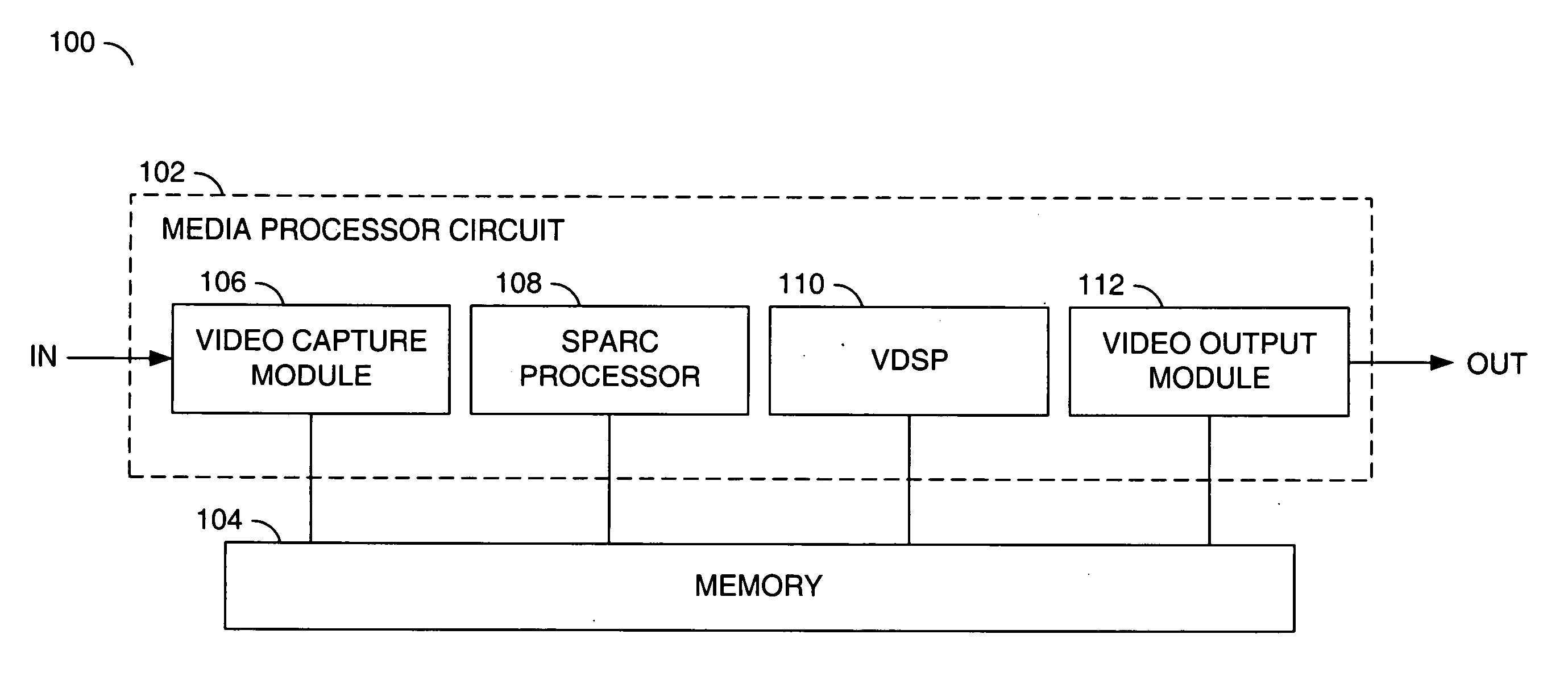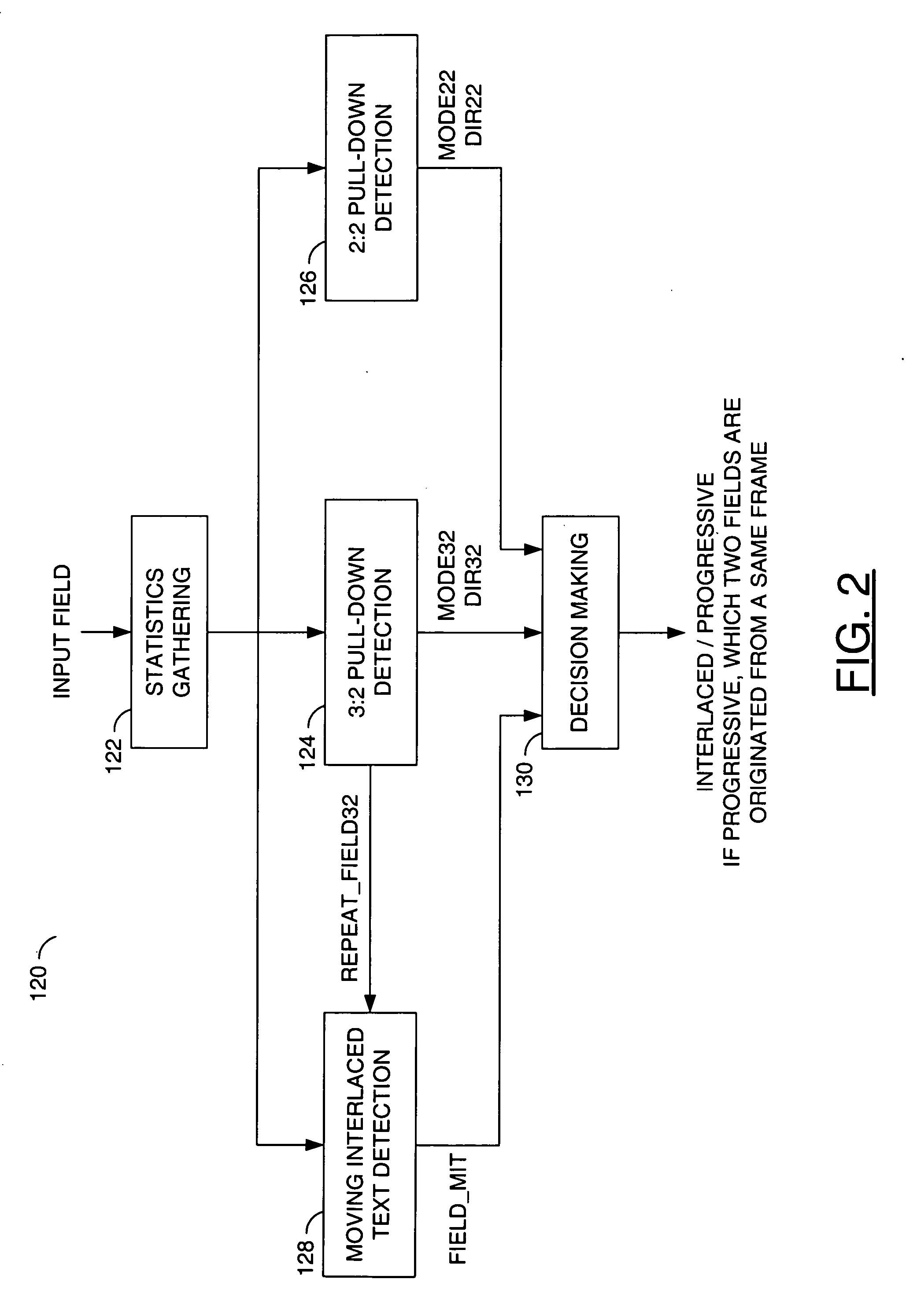Detection of moving interlaced text for film mode decision
- Summary
- Abstract
- Description
- Claims
- Application Information
AI Technical Summary
Benefits of technology
Problems solved by technology
Method used
Image
Examples
Embodiment Construction
[0016] Referring to FIG. 1, a block diagram of an example implementation of a system 100 is shown in accordance with a preferred embodiment of the present invention. The system (or circuit) 100 may be referred to as a network media system. The network media system 100 generally comprises a circuit (or module) 102 and a circuit (or module) 104. An input signal (e.g., IN) may be received by the circuit 102. The circuit 102 may generate an output signal (e.g., OUT). The circuit 102 may be in communication with the circuit 104 to move video data and video-related information back and forth.
[0017] The signal IN may be an analog video signal or a digital video signal that has undergone telecine processing. The signal IN generally comprises a sequence of interlaced-format fields created from a sequence of film frames, a sequence of cartoon frames and / or a normally interlaced material. The signal OUT may be an analog video signal or a digital video signal. The signal OUT generally comprise...
PUM
 Login to View More
Login to View More Abstract
Description
Claims
Application Information
 Login to View More
Login to View More - R&D
- Intellectual Property
- Life Sciences
- Materials
- Tech Scout
- Unparalleled Data Quality
- Higher Quality Content
- 60% Fewer Hallucinations
Browse by: Latest US Patents, China's latest patents, Technical Efficacy Thesaurus, Application Domain, Technology Topic, Popular Technical Reports.
© 2025 PatSnap. All rights reserved.Legal|Privacy policy|Modern Slavery Act Transparency Statement|Sitemap|About US| Contact US: help@patsnap.com



